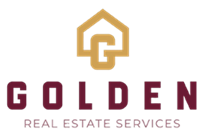26 Oct Explaining Cap Rate for Multi-Family Apartment Buildings
What is the Capitalization Rate (Cap Rate)?
Sophisticated investors use multiple financial techniques to estimate value when considering the purchase of a multi-family apartment building. Cap Rate is a commercial real estate metric that measures a property’s unlevered return (without debt) based on the net operating income (NOI) the property generates. Cap Rate is a standard metric used in the industry, but it’s usually just the starting place when estimating property value. The easiest way to think of Cap Rate is the expected rate of return on an all-cash purchase. Let’s use the 6.38% in the table below for a suburban Class C apartment building. Assuming an all-cash purchase, it helps an investor quickly compare the risk-based apartment building investment return of 6.38% to a risk-free investment like a U.S. Treasury Bond, let’s assume at 3%. The 338 basis points delta is the investor’s risk premium between the two investments. However, this is only the unlevered risk premium. Leveraging the property with debt might increase the investor’s return even further.
The Cap Rate is simply a gauge to help investors compare investment opportunities. The higher the Cap Rate the higher the profit and perceived risk. However, it does not begin to address the myriad of other factors vital to assessing building value and risk. Such as specific location, age, condition of systems, apartment condition and improvements, deferred maintenance, tenant quality, rents and absorption, value-add opportunity, etc. These factors help to complete the enterprise valuation.
General Cap Rates by Multi-Family Building Class – First Half 2018
Just One of Several Methods Used to Estimate Building Value
| Washington, DC Metro Area – Stabilized Properties | |||||||||
| CAP RATES | Change | Spread Over 10-Yr Treasury | |||||||
| Building Class | H1 2018 | H1 2017 | (Basis Points) | H1 2018 | H1 2017 | ||||
| ALL | 5.29% | 5.21% | 8 | 244 | 281 | ||||
| Urban | A | 4.25% | 4.25% | 0 | 144 | 185 | |||
| B | 5.25% | 5.00% | 25 | 240 | 260 | ||||
| C | 6.38% | 6.38% | 0 | 353 | 393 | ||||
| ALL | 5.63% | 5.63% | 0 | 278 | 323 | ||||
| Suburban | A | 5.00% | 5.00% | 0 | 215 | 260 | |||
| B | 5.50% | 5.50% | 0 | 265 | 310 | ||||
| C | 6.38% | 6.38% | 0 | 353 | 398 | ||||
| Source: CBRE Research | |||||||||
General Differentiating Factors in Building Classes
There are different expected Cap Rates for different classes of buildings due to age, condition and perceived risk. Most buildings are either Class A, B or C and these classes can generally be considered for a bank loan.
⇒ Class A Multi-Family – garden product generally built in last 10 years (or high rise less than 20 years old), high quality construction, high-end exterior and interior, strong amenities, no deferred maintenance, onsite property management, commands Class A rents.
⇒ Class B Multi-Family – generally less than 20 years old, little deferred maintenance, not as nice exterior/interior, relatively lower rents.
⇒ Class C Multi-Family – generally 30+ years old, dated exterior/interior, higher deferred maintenance, lower comparative rents.
*These are only simple descriptions. There are no formally recognized ISO standards for building class. It’s possible to jump in class. For example, a Class C by age may be considered a Class B by condition.
How to Calculate Cap Rate or Estimate Building Value
Following a typical P&L statement, Cap Rate is calculated by deducting all operating expenses (excluding debt service) from the rental income after vacancy (collected rent) and dividing by asking price.
⇒ Collected Rent (after vacancy) = $100,000
⇒ All Expenses – taxes, insurance, utilities, repairs, leasing, etc. = $30,000
⇒ Net Operating Income (NOI) = $70,000
⇒ Asking Price = $1,100,0000
⇒ Cap Rate = $70,000/$1,100,000 = 6.36%
⇒ Building Value = NOI/Cap Rate ($70,000/0.0636) = $1,100,000

No Comments